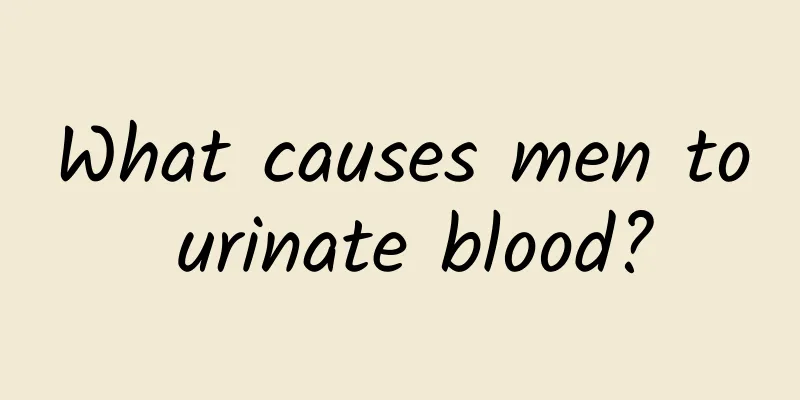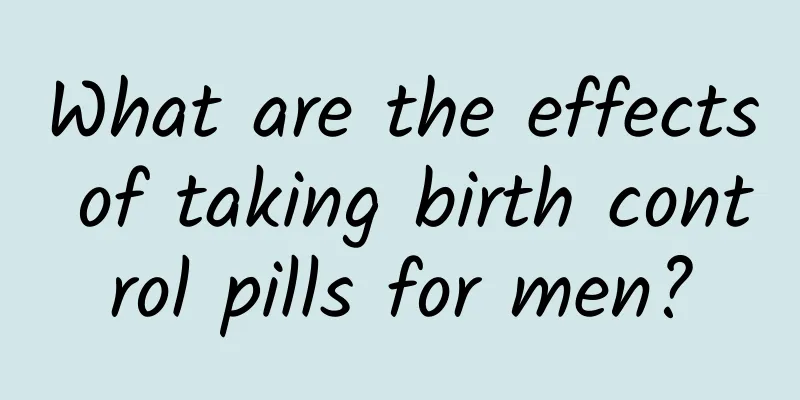How many times can a man ejaculate in a row?

|
After orgasm, men will have a period of indifference. Depending on age and sexual ability, the indifference period can be as short as a few minutes or as long as a few hours. As long as this period passes and an erection is achieved again, ejaculation can be performed. However, there is a limit to the amount of sperm that men can store in a short period of time, so continuous ejaculation is also limited. Let's take a closer look. 1. How many times can a man ejaculate in a row? The process of male orgasm and the accompanying ejaculation subsides quickly, especially the congestion of the genitals subsides quickly. After sexual stimulation stops, the testicles and other parts of the body fall back to their original position and return to their original size. The relaxation process of muscle tension takes about 5 minutes. The biggest difference between the two sexes is that men have a refractory period, that is, there is a period of time after orgasm when they can no longer be sexually aroused, that is, they cannot immediately get an erection again. The length of the refractory period varies from person to person and age to age. Some young men can regain an erection in just a few minutes, while others cannot regain normal sexual response after several hours. Many men under 30 years old have the ability to ejaculate frequently, and their refractory period during the refractory period is very short. However, this phenomenon is rarely seen after the age of 30. With each ejaculation, the volume of semen decreases progressively, and after multiple ejaculations, there may be no semen left to ejaculate. Men's sexual psychological and physiological resistance to sexual stimulation continues to increase. 2. Physiological process of ejaculation The first stage: The moment when a man "feels that ejaculation is coming" is just before the first stage of ejaculation. The actual ejaculation begins about 2 seconds after this feeling appears. In other words, it is likely that the expansion of the bulbar urethra and the accumulation of semen components in the prostatic urethra cause the body's receptors to perceive and cause this feeling of inevitable ejaculation. The second stage: In the second stage of ejaculation (pushing semen from the prostatic part of the urethra to the urethral opening), the male's subjective feelings are divided into two stages: the first stage is to feel the rhythmic and repeated contraction of the urethral sphincter. This feeling lasts from the beginning of the discharge process to the end of the discharge. The strength of the subjective feeling of this contraction is different. The first two or three contractions are very strong, then gradually slow down and weaken, and finally it is not ejaculation, but outflow. The second stage is ejaculation accompanied by euphoria. This subjective feeling of euphoria is strong at the beginning and then decreases significantly. The second stage of euphoria contains the judgment of the volume of semen. The larger the volume of discharged semen, the stronger the euphoria. If you compare the feeling of your first ejaculation after a long period of abstinence with the feeling of your second ejaculation shortly after the refractory period ends, you can tell the difference between them. |
<<: Causes of Low Serum Testosterone
>>: Why does my penis hurt after sex?
Recommend
Why does the glans penis smell fishy?
Many male friends cannot understand why the glans...
Male dysfunction turns out to be high blood pressure
Hypertension is the number one killer of human he...
Which department should I go to for male prenatal checkup?
As we all know, the old ideas in our country have...
How to shrink pores for boys
Over the years, stress in life, and irregular wor...
What can I apply to the glans penis to reduce sensitivity?
Some men may have a high sensitivity in their gla...
The role of male sperm
Men's sperm can make women pregnant. We know ...
The correct posture for men to go to the toilet
Proper urination for men can reduce the risk of b...
What medicine is used for annular glansitis?
The disease of annular glansitis will cause a lar...
The incidence of fungal glansitis is high, you need to be aware of these symptoms!
Fungal glansitis is a common symptom for young pe...
Horrible! Seminal vesiculitis can actually cause such symptoms
Medically speaking, seminal vesiculitis is an inf...
What to do if a man is physically weak
Nowadays, men's life pressure is gradually in...
Itching on both sides of the testicles and at the base of the thighs
In daily life, some male friends have unhealthy l...
What should boys eat if their urine test shows inflammation?
Urine test is a very popular pathological examina...
Two small methods to easily remove small wrinkles on the neck
As we age, our skin will also have some problems,...
What are the black foods that nourish the kidneys? Black foods nourish the kidneys.
In life, many people generally believe that what ...









